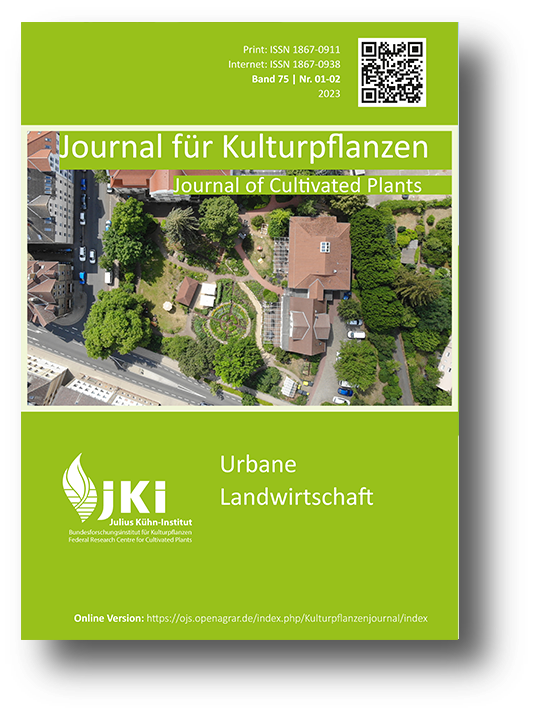Typology of urban agriculture in Germany
DOI:
https://doi.org/10.5073/JfK.2023.01-02.03Keywords:
urban agriculture, typology, city-near rural, peri-urban, intra-urban, city-regional, urban developmentAbstract
The types of the city-regional, i.e. city-near rural, peri-urban and intra-urban agriculture (“urban agriculture”) were qualitatively recorded in this study on the basis of an online research.
The types of agriculture were assigned to main actors and their main intention. Profit-oriented companies, non-profit-oriented urban gardening initiatives and the administrations of the cities and municipalities were named as the main actors.
The companies manage both open land areas and greenhouse areas, work in building-integrated or building-bound agriculture. They use open spaces, cages, stables, plant growth chambers or combined systems such as aquaponics to produce a wide variety of products. They use soil, substrates, hydroponic media or growing media. Their services range from the production of arable and horticultural crops to animal husbandry; Processing and refining of raw materials are included. The raw materials are used to produce food for humans, animal feed or to generate energy. Nature conservation and biodiversity services are increasingly being integrated. There are also social benefits. Funding measures play an important role in the orientation of many companies.
Not-for-profit, urban gardening takes place in public spaces, community gardens and in house and allotment gardens. The focus here is on questions of lifestyle, self-realization, participation and cooperation, self-sufficiency, shaping the environment and experiencing nature.
The common good-oriented work of the cities and municipalities themselves leads to programs and concepts in terms of services of general interest, but also to their own measures that represent the framework for urban agriculture. For this purpose, guiding concepts such as the edible city, urban-regional food systems, food councils, sponge city or green city concepts are adapted and further developed.
The targeted addressing, networking and, if necessary, financial support of the economically working farms, the socially oriented working urban gardeners and the public welfare-oriented cities and municipalities that have to create the framework conditions for urban agriculture appear to be of central importance in order to support and promote agriculture in its multifunctionality and to develop its huge potential.
Downloads
Published
Issue
Section
License
Copyright (c) 2023 Falko Feldmann, Annette Piorr, Ute Vogler

This work is licensed under a Creative Commons Attribution 4.0 International License.
The content of the journal is licensed under the Creative Commons Attribution 4.0 License. Any user is free to share and adapt (remix, transform, build upon) the content as long as the original publication is attributed (authors, title, year, journal, issue, pages).
The copyright of the published work remains with the authors. The authors grant the Journal of Cultivated Plants, the Julius Kühn-Institut and the OpenAgrar repository the non-exclusive right to distribute and exploit the work.







